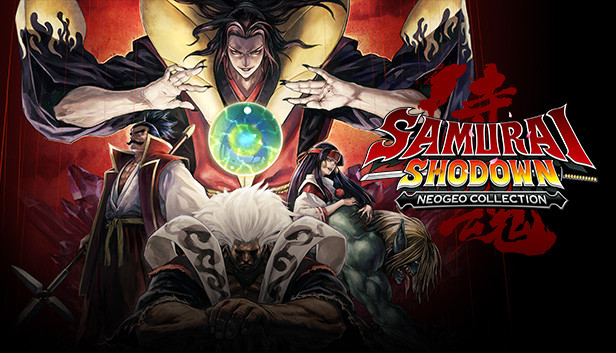Samurai Spirit Mac OS
- English
- 日本語
- 简体字
- 繁體字
- Français
- Español
- العربية
- Русский
Samurai Spirit Mac Os Download
In October this year, Spain’s prestigious Prince of Asturias Award of Concord was bestowed on the “heroes of Fukushima” who fought to bring the crisis at the Fukushima Daiichi Nuclear Power Station under control. In attendance at the award ceremony were representatives of Japan’s Self Defence Forces, fire-fighters, and police officers, all of whom worked to cool down the reactors and evacuate nearby residents to safety. The recipients were commended by the prize committee for the way in which their conduct had “embodied the values most deeply rooted in Japanese society” and for their “courage and exemplary behaviour” in the face of an unprecedented crisis. At a local press conference, Spanish reporters asked about the meaning of the “samurai spirit” and the “kamikaze” style of sacrifice that featured prominently in media reports following the nuclear accident.
NOTE: The Battle Penalty on the drawn card for the viewer choice, is the one that prevents you from giving support to another player on your turn as your act. Samurai Games: Game review; Downloads; Screenshots 29; If you can't wait for the 16-Bit version to reach the shops, check out this version of Shodown. Despite being designed for the Game Boy, all the characters from the monster huge Neo cart are represented, even though they are given the munchkin treatment. Better still, by using the Super. It is the page of ‘TOP’ of ‘SAMURAI SPIRIT TOURISM’ The Way of the Samurai was born in the midst of the reoccurring battles of the Sengoku Period, known as the Age of Warring States (1467-1603).Samurai believed in maintaining one’s dignity, while also maintaining the dignity of others, even in the midst of a. IPhone and Mac sales are way up from the start of the pandemic. Meanwhile, Apple's crucial Services business hit another all-time high. Velazco, 18 hours ago. Twitter Facebook Reddit Mail.
What is the Samurai Spirit?
The first encounter between samurai and Spain took place nearly 400 years ago. In 1613, Hasekura Rokuemon Tsunenaga (1571–1622) headed a diplomatic mission during which he visited the Spanish court of King Philip III as well as the Vatican. Evidently some members of Hasekura’s delegation chose to stay behind in Spain, and even today several hundred people of Japanese descent can be found in the area around the port city of Seville bearing the family name Japón.
It was over the course of the prolonged period of peace during the Edo period (1602–1868) that the swordsmanship skills of the samurai developed into a form of character-building martial arts. In the subsequent Meiji era (1868–1912), Nitobe Inazō’s book Bushido: The Soul of Japan (written in English) introduced the “way of the samurai” to the outside world as an important aspect of the spiritual foundation of the Japanese people. Whether people inside or outside Japan have truly understood the real meaning of the samurai spirit, however, is open to doubt.
According to Nitobe, Bushido was a centuries-old oral traditional that had developed out of the manner of living of the samurai class. He defined it as “the ways which fighting nobles should observe in their daily life as in their vocation.” At the core of Bushido was a combination of teachings taken from Japan’s three main philosophical traditions: Buddhist precepts of serenity, stoicism, and non-attachment to life, Shinto notions of fidelity and patriotism, and Confucian morality.
Bushido Lives on in Present-Day Virtues
The Bushido spirit of the past survives today in Japanese martial arts such as kendo, epitomized by the motto kenzen itchi [lit. “the sword and Zen are one”]. The philosopher Watsuji Tetsurō (1889–1960) wrote that kendo involves raising a struggle to a life-transcending level by freeing oneself from an attachment to life. Kendo inculcates moral instruction through strict adherence to a code of etiquette. A kamidana (miniature Shinto shrine) is on display in every dojo, and every practice session begins and ends with the practitioners bowing in unison in the direction of the shrine. Anyone who visits a dojo is likely to be impressed by the dignified and austere atmosphere.
Movement in kendo follows strict streamlined regulations, and all unnecessary action is avoided. When standing up, the right foot moves first, to make it easier to draw one’s sword and recover from a sudden attack. The aim in kendo is not to knock over the opponent, but to conquer the self. It is a spiritual as well as physical exercise. For this reason, you will never see a kendo practitioner raising his or her fist in the air to celebrate a point scored off an opponent. The basic attitude of kendo is to shun any base feeling, whether cowardice, sneakiness, or servility. What is at stake is not good versus evil but rather noble versus ignoble.
Those imbued with the samurai spirit are capable of serenely carrying out their work in the face of any adversity, and have the willpower to master themselves. I hope that a correct understanding of this spirit will be fostered by the recent Prince of Asturias award bestowed on the heroes of Fukushima. As Nitobe pointed out back in the Meiji era, Bushido lived on as a virtue even after it died out as a social system. Today, a century later, the samurai spirit can still be found in Japan. I hope the people of Japan will take pride in this fact and ensure that the tradition survives into the future. (November 9, 2011)
Samurai Spirit Mac Os X

Samurai Spirit Mac Os 11
(Originally written in Japanese.)